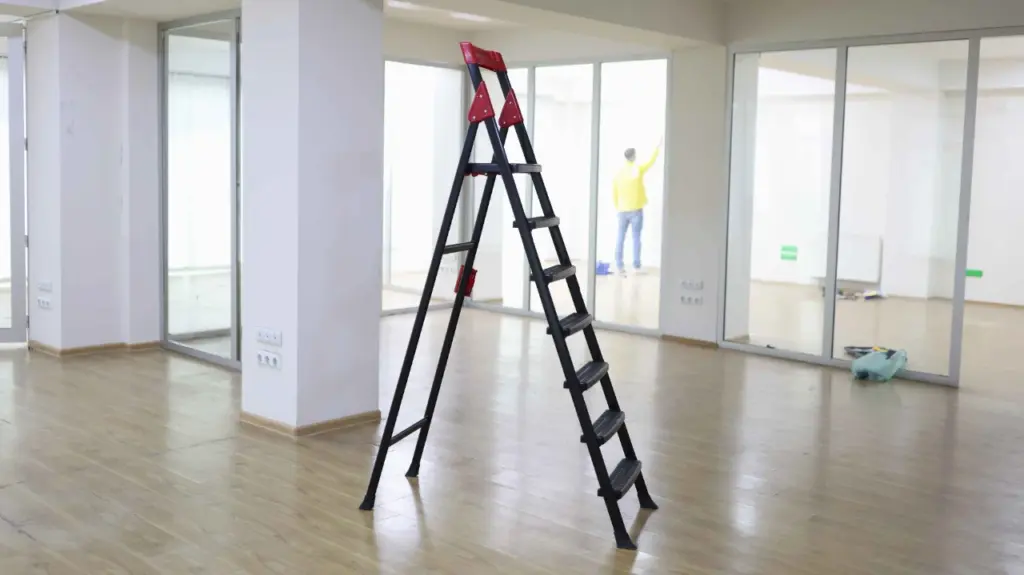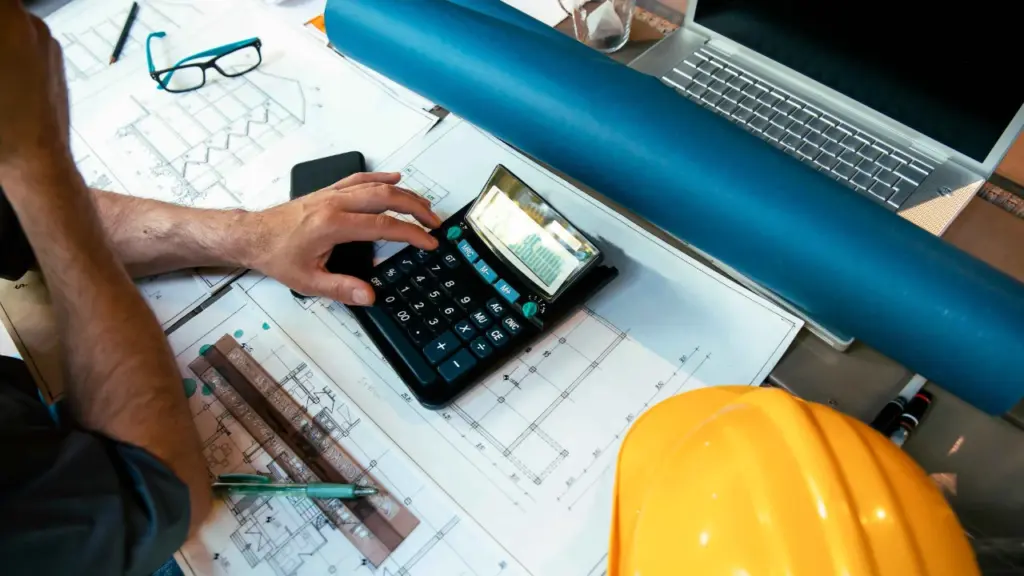Ever wondered how businesses transform a bland commercial space into a tailored environment that perfectly suits their needs?
The answer often lies in tenant improvements (TI) and tenant improvement allowances (TIA). Whether you’re a tenant looking to customize your new space or a landlord aiming to attract high-quality tenants, understanding these concepts is crucial.
This guide will solve the intricacies of tenant improvements, explore the role of TIAs, and reveal why these factors are pivotal in commercial real estate (CRE). Read on to discover how strategic improvements can be a game-changer for both tenants and landlords.
What Are Tenant Improvements?

Tenant improvements (TIs), also known as leasehold improvements, involve alterations or modifications to a leased commercial space tailored to the tenant’s needs.
These can include decorative updates like painting and flooring, or major renovations such as reconfiguring layouts and installing new systems.
Key Points of Tenant Improvement:
- Purpose: Adapt the space for the tenant’s operational needs and branding.
- Scope: Ranges from minor updates to significant structural changes.
- Lease Agreement: Details what changes are allowed and who pays for them, often including a TI allowance from the landlord.
- Costs: The TIA covers part of the costs; any excess is usually the tenant’s responsibility.
- Approval and Compliance: Tenants must get landlord approval and may need permits to ensure compliance with building codes.
Tenant improvements are essential for customizing a space and are a key aspect of lease negotiations and property management.
How Does a Tenant Improvement Allowance Work?

A Tenant Improvement Allowance (TIA) is a financial provision from a landlord to fund modifications or renovations in a commercial space to meet a tenant’s specific needs. Here’s a detailed look at how TIAs work:
Structure of Tenant Improvement Allowances
1. Definition and Purpose
The TIA enables tenants to customize their leased space, ensuring it meets their operational needs and enhances functionality and aesthetics.
2. Calculation and Distribution
TIAs can be structured in various ways:
- Per Square Foot: Calculated as a fixed amount per square foot, e.g., $20 per square foot.
- Total Dollar Amount: A lump sum of money agreed upon in the lease.
- Reimbursement: Tenants pay for improvements upfront and are reimbursed by the landlord.
TIAs cover construction costs (materials, labour) and soft costs (design fees, permits). Tenants usually need landlord approval for improvement plans.
Impact on Tenants
1. Customization and Functionality
TIAs allow tenants to:
- Alter Layouts: Change floor plans to suit business needs.
- Enhance Interiors: Upgrade finishes, install fixtures, and match the space to their brand.
This customization improves operational efficiency and tenant satisfaction.
2. Financial Considerations
Tenants should consider:
- Cost Overruns: Costs exceeding the TIA are their responsibility.
- Lease Terms: Understand TIA terms to avoid disputes.
Impact on Landlords
1. Attracting and Retaining Tenants
A generous TIA can:
- Reduce Vacancy Rates: Attract tenants quickly.
- Increase Property Value: Enhance the property’s value and rent payments.
2. Negotiation and Agreements
Landlords must:
- Define Improvement Scope: Outline what improvements are covered.
- Establish Approval Processes: Ensure improvements comply with property standards and building codes.
Types of Improvements That Are Typically Covered
Tenant Improvement Allowances (TIAs) are designed to cover various types of modifications and upgrades to a commercial space to serve the tenant’s specific needs. Here’s a breakdown of the typical improvements covered under a TIA:
Interior Layout Changes
Partition Walls and Room Configurations: These changes ensure the space fits the tenant’s business model and workflow.
- Partition Walls: Erecting new walls to create offices, meeting rooms, or workstations.
- Room Configurations: Altering the layout to better utilize space or adapt to the tenant’s operational needs.
Floor Plan Adjustments: Floor plan adjustments help in optimizing the workspace for productivity and collaboration.
- Open Layouts: Clearing walls to create open office spaces.
- Private Areas: Adding enclosed offices or conference rooms.
Finish and Aesthetic Upgrades
Flooring: Upgraded flooring can improve the appearance and functionality of the space.
- New Flooring: Installing carpets, hardwood, tiles, or other flooring materials.
- Flooring Upgrades: Replacing outdated or worn-out floors.
Wall Finishes and Painting: Fresh wall finishes can rejuvenate the space and create a welcoming environment.
- Paint: Repainting walls to align with brand colors or for aesthetic improvements.
- Wall Coverings: Installing wallpapers or decorative panels.
Ceiling and Lighting: Enhanced ceilings and lighting contribute to a better overall environment.
- Ceiling Tiles: Installing new ceiling tiles or panels.
- Lighting Fixtures: Upgrading or installing new lighting to improve visibility and ambiance.
Building Systems and Infrastructure
HVAC Systems: A well-functioning HVAC system is essential for comfort and operational efficiency.
- New Installations: Installing or upgrading heating, ventilation, and air conditioning systems.
- System Enhancements: Enhancing existing systems for better efficiency or capacity.
Plumbing and Electrical: Upgraded plumbing and electrical systems ensure the space meets operational requirements.
- Plumbing: Installing new fixtures, restrooms, or kitchen areas.
- Electrical: Upgrading electrical systems to support additional equipment or lighting.
Fixtures and Equipment
Custom Fixtures: Custom fixtures enhance the functionality and branding of the space.
- Built-in Furniture: Installing custom shelving, counters, or cabinetry.
- Specialized Equipment: Adding tenant-specific equipment, such as laboratory setups or retail displays.
Special Installations: Special installations support security and brand identity.
- Security Systems: Installing alarms, cameras, or access control systems.
- Signage: Adding tenant signage or branding elements.
Compliance and Accessibility
Building Code Updates: Compliance and accessibility upgrades are essential for legal and inclusive operations.
- Compliance Improvements: Making changes to meet building codes or regulations.
- Accessibility: Ensuring the space is accessible according to ADA (Americans with Disabilities Act) standards.
Building Permits: Proper permits are crucial for ensuring all improvements are legally compliant.
- Permits: Obtaining necessary permits for construction or renovation work.
Why Are Tenant Improvements Important for Both Tenants and Landlords
Tenant improvements are crucial for both tenants and landlords, offering benefits that enhance the value and functionality of commercial spaces.
For Tenants:
- Customization: Allows tenants to tailor the space to their specific business needs, enhancing functionality and efficiency.
- Branding: Provides an option to align the space with their brand image and operational requirements.
For Landlords:
- Attracting Tenants: Competitive TIAs can make properties more appealing, leading to quicker lease signings.
- Increasing Property Value: Well-maintained and customized spaces can enhance the property’s value and attract higher-quality tenants.
Overall, tenant improvements help create a more functional and appealing space, benefiting both parties in the leasing process.
How Are Tenant Improvements Negotiated in a Lease Agreement?

Negotiating tenant improvements (TIs) in a lease agreement involves several key steps to align both parties’ needs and responsibilities.
- Initial Discussions: The tenant outlines specific improvement needs, and the landlord provides an initial offer for the tenant improvement allowance (TIA).
- Determining the Scope: Identify specific improvements and obtain cost estimates. Secure necessary approvals from the landlord and obtain building permits.
- Negotiating the Allowance: Agree on the TIA amount and payment terms (upfront or reimbursement). Decide who covers costs exceeding the TIA and any soft costs.
- Incorporating Terms into the Lease: Include detailed provisions and timelines for the improvements in the lease agreement. Define the roles and responsibilities of both the tenant and landlord.
- Finalizing the Lease: Review the final lease agreement to ensure all TI terms are accurately documented. Both parties sign the lease agreement, making the negotiated TI terms legally binding.
This approach ensures tenant improvements are clearly defined, financially covered, and legally documented, benefiting both the tenant and the landlord.
Understanding the Costs Associated with Tenant Improvements

Tenant improvements (TIs) can involve a range of costs that need to be carefully considered and negotiated. Here’s a breakdown of the primary cost factors:
Direct Construction Costs
Direct construction costs are the most significant part of tenant improvement expenses. These include:
- Materials and Labor: Costs for materials (e.g., flooring, drywall, paint) and labour required to conduct the improvements and complete the build-out.
- Fixtures and Equipment: Installation of custom fixtures and any necessary equipment.
- HVAC, Plumbing, and Electrical: Upgrades or changes to heating, ventilation, air conditioning, plumbing, and electrical systems.
Soft Costs
Soft costs are indirect expenses related to the planning and undertaking of tenant improvements. These include:
- Design Fees: Payments to architects, interior designers, and engineers for creating plans and specifications.
- Permits and Inspections: Costs for obtaining necessary building permits or tenant improvement permits and inspections to ensure compliance with local codes.
- Project Management: Fees for project managers who supervise the construction process to ensure it stays on schedule and within budget.
Contingency Costs
Contingency costs are funds set aside to cover unexpected expenses or changes during the construction process. These might include:
- Unforeseen Conditions: Additional costs due to unforeseen issues like structural problems or code compliance issues discovered during construction.
- Change Orders: Costs associated with changes requested by the tenant after the project has begun.
Tenant Improvement Allowance (TIA)
The TIA is a crucial element in managing Tenant Improvement costs. It is the amount the landlord agrees to contribute towards the tenant improvements. Key considerations include:
- Amount and Terms: The total dollar amount or per-square-foot allowance, and whether the landlord pays upfront or reimburses the tenant after completion.
- Coverage: What the TIA covers, including direct construction costs, soft costs, and whether it extends to furniture, fixtures, and equipment (FF&E).
Incorporating Special Cases
This refers to specific scenarios that may affect the costs and terms of tenant improvements. These scenarios can include:
- Landlord’s Offering: In some cases, the landlord may offer a higher TIA to attract a particular tenant, especially if the tenant is expected to add significant value to the commercial property.
- Existing Building vs. New Construction: The costs can vary significantly between making improvements in an existing building and a new construction. Improvements in an existing building may require additional work to bring the space up to modern standards, while new construction allows for more flexibility in customization from the outset.
How Tenant Improvement Allowances Affect Commercial Real Estate (CRE) Leasing
Tenant improvement allowances (TIAs) play a significant role in commercial real estate leasing. They can influence various aspects of the leasing process and impact both tenants and landlords. Here’s how TIAs affect commercial real estate leasing:
Attracting Tenants
Higher tenant improvement allowances (TIAs) make commercial spaces more attractive by covering customization costs, which is vital in competitive markets. A well-funded TIA helps tenants tailor the space to their needs, increasing the likelihood of leasing.
Negotiating Leases
TIAs play a vital role in lease negotiations. They affect the lease terms and conditions, with the amount and terms of TIAs often reflecting market conditions and tenant requirements. Effective negotiation of TIAs can impact the overall lease agreement.
Cost Management
TIAs help landlords manage tenant improvement costs by covering a portion of the expenses. This arrangement ensures that the space meets market standards while allowing landlords to balance their financial investment and attract tenants.
Lease Terms
The structure of a TIA affects various lease terms, including how costs are paid (upfront or reimbursed) and what is covered. These terms clarify financial responsibilities for both the tenant and the landlord, helping prevent disputes.
Property Value
A well-implemented TIA can enhance a property’s value and marketability. Improved spaces attract higher-quality tenants, potentially increasing the property’s overall value and appeal in the commercial real estate market.
Factors Tenants Should Consider When Requesting TIs

When requesting tenant improvements, tenants must carefully consider various factors to ensure the space meets their needs and aligns with their lease terms.
Improvement Scope
Tenants need a clear plan outlining required design preferences and system upgrades. This ensures precise cost estimation and alignment with business needs.
Tenant Improvement Allowance
Understand the tenant improvement allowance (TIA) when the landlord is offering it. Evaluate if it covers desired improvements and clarifies payment terms, whether upfront or reimbursed.
Lease Terms and Conditions
Review lease terms regarding tenant improvements, ensuring clarity on the approval process, cost responsibilities, and handling of excess costs.
Impact on Lease Duration
Consider how the improvements will affect the lease duration. Significant improvements might require a longer lease term to justify the investment.
Compliance and Permits
Ensure improvements comply with local building codes and regulations, and acquire necessary permits to avoid delays and extra costs.
Project Management
Decide who will manage the improvement project—whether it will be the tenant, the landlord, or a third party. Effective project management ensures that improvements are completed on time and within budget.
Future Flexibility
Plan improvements to allow for future modifications, ensuring the space can adapt to evolving business needs without significant extra costs.
Final Thoughts
Understanding tenant improvements (TI) and tenant improvement allowances (TIA) is important for both tenants and landlords in commercial real estate.
These enhancements not only allow businesses to tailor spaces to their operational needs but also play a significant role in lease negotiations and property management.
By efficiently utilizing TIAs, tenants can create functional and appealing work environments, while landlords can attract and retain high-quality tenants, eventually enhancing the value and marketability of their properties.
Meticulous planning, negotiation, and compliance with building codes ensure that these improvements benefit all parties involved, making tenant improvements a vital aspect of successful commercial leasing.
Frequently Asked Questions
What are Tenant Improvements and how do they work?
Tenant Improvements or TI, refer to the customizations or changes made to a leased property to meet the tenant’s specific needs. Here are the key aspects:
Purpose: TI encompasses changes to a property, such as installing partitions, upgrading flooring, or adding washrooms within an existing building.
Lease Agreement: These improvements are part of a lease agreement and must be agreed upon by both the tenant and the building owner.
Renovation Costs: The cost of improvements can vary widely, typically ranging from $20.00 per square foot for basic upgrades to a higher amount for extensive renovations.
Approval and Compliance: All changes must comply with building code requirements, and approval from the landlord may be required.
Tenant Improvements allow tenants to configure a leased property to suit their operational needs, enhancing functionality and efficiency.
What is a Tenant Improvement Allowance (TIA)?
A Tenant Improvement Allowance (TIA) is a financial inducement provided by the landlord to cover the cost of customizations. Here are the details:
Financial Support: TIA comes in the form of a total dollar sum to cover the renovation expenses. In some cases, the landlord pays for tenant improvements directly, which can simplify the financial arrangement for the tenant.
Lease Term Impact: The amount of TIA can influence the lease term, often leading to longer agreements, typically two to three years or more.
Negotiation: The agreed-upon TIA is based on factors such as the tenant’s creditworthiness and the competitive lease market.
Scope and Reimbursement: TIA covers specific improvements, and tenants must provide proof of costs incurred for reimbursement.
Tax and Depreciation: TIAs may be subject to tax considerations, and costs can be amortized over time in the tenant’s financials and tax returns, since the landlord may also account for these factors in their financial planning.
A TIA helps tenants manage the costs of customizing their leased property while providing landlords with a tool to attract potential tenants.
How does TI benefit the building owner and tenants?
Tenant Improvements offer significant benefits to both landlords and tenants. Here’s how:
- For Tenants:
Customized Space: TI allows tenants to make changes to the property to meet specific business requirements, enhancing operational efficiency.
Tenant Inducement: The financial inducement in the form of TIA helps offset renovation costs, making it easier to invest in the space.
Brand Identity: TI can incorporate branding elements, establishing a strong identity within the leased property.
- For Landlords:
Attracting Tenants: Offering TI or TIA can make a commercial office space more attractive to potential tenants.
Increased Property Value: Quality improvements can enhance the overall value of real estate investing.
Higher Occupancy: Customizable spaces can lead to higher occupancy rates and longer lease terms.
Increased Property Value: Quality improvements can enhance the overall value of the real estate investment.
Tenant Improvements create a win-win situation, ensuring tenant satisfaction and increasing the value of the leased property.
What should tenants consider before negotiating a Tenant Improvement Allowance?
Tenants should carefully evaluate several factors before negotiating a Tenant Improvement Allowance. Essential considerations include:
Scope of Work: Define the scope of work and get an idea of how much the renovation expenses will be, typically in terms of square footage and worth of construction costs. This will help you understand the total dollar sum required to cover the cost of improvements in order to configure the space to meet your needs.
Lease Terms: Consider how the TIA will affect the lease terms, including the length and rental rates.
Reimbursement Process: Clarify the reimbursement conditions, such as required documentation and approval timelines, and allocate time to discuss these details with the landlord.
Quality and Compliance: Ensure that the work meets building code requirements and consider hiring a general contractor to manage the project, as construction may involve detailed specifications and adherence to various regulations.
Financial Impact: Understand how the TIA will affect your financials, including amortization and tax implications.
Meticulous planning and negotiation can help secure a TIA that effectively supports your business needs while aligning with your lease agreement.
How do Tenant Improvement and Tenant Improvement Allowance affect lease agreements?
Tenant Improvement and Tenant Improvement Allowance significantly influence the terms and conditions of lease agreements. Here’s how:
Lease Length: The inclusion of a TIA often requires a longer lease term, usually two to three years or more, to justify the landlord’s investment.
Rental Rates: The cost of improvements and the size of TIA may be reflected in higher rent rates to amortize the renovation costs.
Maintenance Responsibilities: Lease agreements may outline responsibilities for maintaining the improvements, ensuring they remain in good condition.
Termination Clauses: Some leases may require tenants to restore the space to its original condition upon termination or negotiate the removal of changes made.
Approval Process: The lease should detail the approval process for TI, including timelines and necessary documentation.
Understanding the impact of TI and TIA on lease agreements helps both tenants and landlords create clear, mutually beneficial terms that support their long-term goals.

